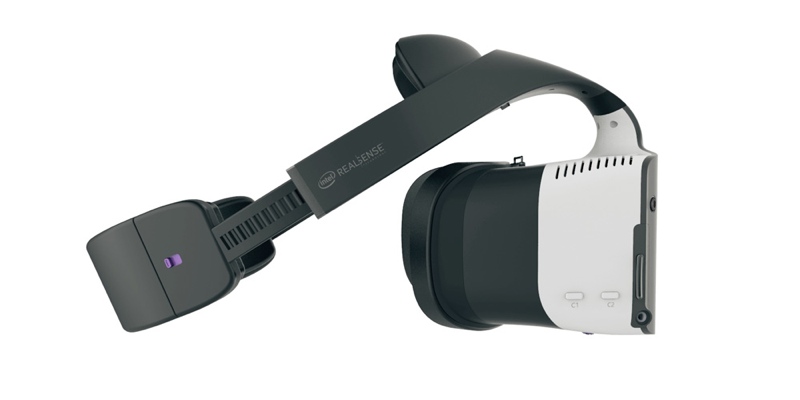First, there was virtual reality tech, like Oculus’ Rift, which places you into a digital world. Next, there was mixed (or augmented) reality tech like Microsoft’s HoloLens, which lays digital information on top of your view of the real world. Now, Intel has introduced “merged reality” tech with its new Project Alloy all-in-one virtual reality solution.
Got questions? I did. I dug in, and here are the answers.
What is Merged Reality?
In an editorial on Medium, Intel CEO Brian Krzanich explained the technology as “a new way of experiencing physical and virtual interactions and environments through a suite of next-generation sensing and digitizing technologies.”
Practically speaking, that means the technology uses Intel’s RealSense 3D sensors to enable users to move around in and interact with virtual reality simulations. Project Alloy uses “sensing technologies to help make sure that while you’re experiencing your virtual world, you’re not colliding into real-world stuff.”
That might not seem like a big deal, but anyone who has tried virtual reality knows that it usually requires extensive external sensors placed around the room to track you as you move. It’s expensive, and it limits the size and location of the rooms you can use.
With merged reality, all those sensors are integrated into the headset itself. Project Alloy makes virtual reality much more mobile.
What’s the point?
Project Alloy’s merged-reality sounds a lot like it’s splitting the difference between augmented reality and virtual reality. (Its name hints at this: an alloy is a mixture of metals, or a metal and another element.) It’s cool, but why bother?
Project Alloy is designed to give you agency to explore inside recordings of real-world events—say a football game captured by a number of cameras around the stadium—and find your own vantage point. It gives you the ability to use your hands, to touch and move things. It helps you navigate real-world content as if it were digital content.
Mixed reality is, in other words, yet another way to blur the line between the real and digital worlds.
Can I Buy One?
The tech is currently being made to developers—just like Microsoft’s HoloLens. Intel didn’t indicate when this would be or how much it would cost. They did say that they plan to let third-party partners create their own branded products with the Alloy technology by 2017.
So it’s coming soon. What commercial uses can you imagine for it?






